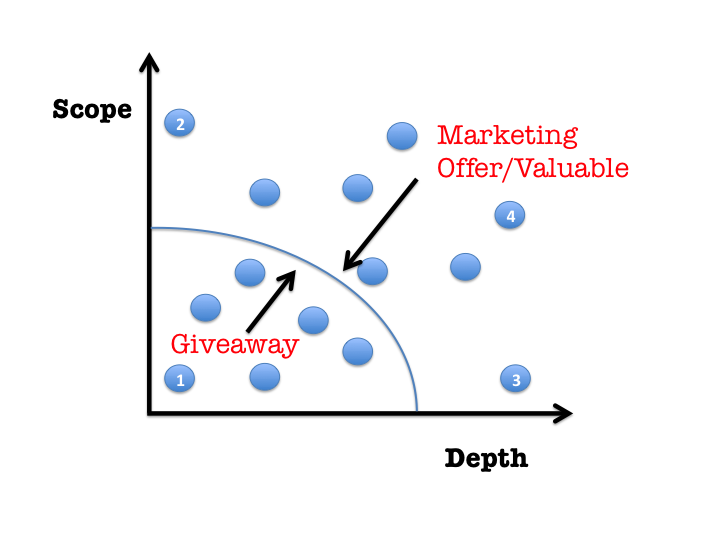
You can learn the best practices of all the components of a landing page, but I can’t tell you the perfect landing page looks like this, because It will depend on your audience and your marketing personas – and the power of your value proposition.
What you can do though is identify and test (and I mean test) the value to find the right combination that works best for your marketing offer - then apply it to your content marketing strategy.
1. Understand that it’s a value exchange
People want your content because it solves their problem or challenge, makes them an expert, explains how to do something, demystifies something they don’t understand, gives them ammo to take to their boss or is simply interesting.
What you’re trying to do with your landing page is exchange information with your reader. So it’s a value exchange – what’s it worth to give you this information.
Sometimes it’s easy to spot that you’re over asking, because the quality of the information can go down: we’ve all had Mickey and Lady Gaga from businesses in Afghanistan with 10,000 employees and a turnover less than a million. Another indicator is your bounce rate, or non-conversion rate, which we can talk about later.
Ok so understand it’s a value exchange and look at your marketing offer.
2. Creating marketing offers
So first off a marketing offer is not a product data sheet, it’s not a contact us form completion, a fact sheet, buy this product now or even an infographic.
A marketing offer is Ebooks, Guides, Webinars (Live & Archived), Slideshows, Kits, Industry Case Studies, New Industry Research, Templates, Free Tools, Free Trials, Product Demos, Consultations and possibly Coupons
It needs to be in the zone of the marketing personas landscape of influence and could be in the area your product helps someone.
How does it qualify as an offer? People are happy to exchange information to get their hands on it – and that information is the price or value.
3. How to understand value

Imagine you have some content. Let’s keep it simple and follow this example - stock prices.
- This is a stock price: It’s a fact you can read from any source – it is what it is
- Little depth and wide scope – the value of stocks for a whole industry set out as a benchmark of the winners and losers
- High depth low scope – an opinion piece on why a stock is at that price and what it could move to over the next 3 months
- The view of a whole industry, who the players are, who will win and why
Replace the example above with your own information. The point is if you can clearly distinguish between what is fact and what is value add with opinion, analysis, expertise and learning – you can value your marketing offers on this basis.
Here’s an inbound marketing example applied to the same structure
- Product features and product tour videos
- All the social media platforms you could be use for lead generation
- Learn LinkedIn from the experts
- State of Inbound Marketing or a free consultation or inbound assessment
Anything above and to the right of the line is your opinion, experience, expertise and insight added (e.g. Learn LinkedIn from the Experts).
Anything to the left and below the line is short on depth and insight and can be gleaned from a number of sources (e.g. 5 things you should tell the sales team about LinkedIn)
Now map your content from your content audit and your editorial calendar against the Value Matrix – that is once you’ve read about targeting your marketing personas.
You need to understand that your content is being priced by the reader. And if you’re going to charge with a value exchange you need to give opinion, depth, analysis, insight, experience, know-how and expertise to get the best price.
4. So who’s your target marketing persona
If you’re going to be helpful, useful and interesting you need to know who you’re talking to, what problems they have, how you can help them and what they are interested in (vocationally and personally).
Why?
- You are going to be telling stories – so make it personal
- You need to talk the customers’ language – it’s not about you
- You need to know how to educate them and make them an expert
- You need the right tone of voice
- You need to know what makes them tick in order to empathise
- You need to choose appropriate images
- You need to know what will be valuable
When you’ve done this you can map content to your marketing offers, know what should be free and what you give away, know how much information you can legitimately ask for in one session of a form and know how to appeal enough to invoke action.
Set up a simple excel spreadsheet and test your content to landing pages.

Let me know how you get on.
